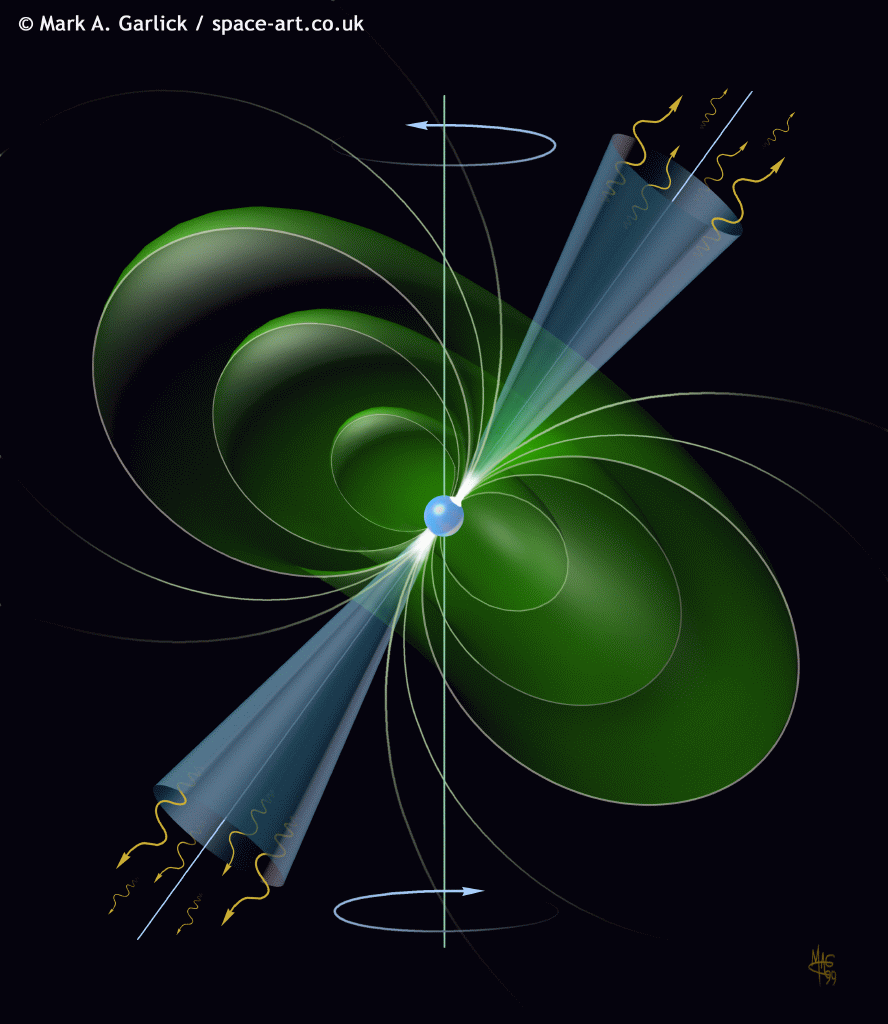The Physcis of a Pulsar
As discussed in "Formation of a Pulsar," these pulsars have a high rotational speed as a consequence of the conservation of angular momentum.
This fast rotational speed applies to the electrically charged core of the Pulsar. This changing electric field produces a strong magnetic field. Since the magnetic field itself is not constant, an electric field is produced and causes the protons and electrons on the surface of the pulsar to accelerate non-uniformly. You have already learned from the Radiation section of this website that charges with non uniform acceleration produce EM waves. This EM radiation, caused by the accelerating protons and electrons, is released towards the magnetic poles.
Since the axis of rotation and the magnetic poles are not aligned, observers see this light pulse in periodic fashion [1].

In the diagram, the orange lines represent EM radiation. The main axis represents the axis of rotation. Notice how they are not parallel.
Next
